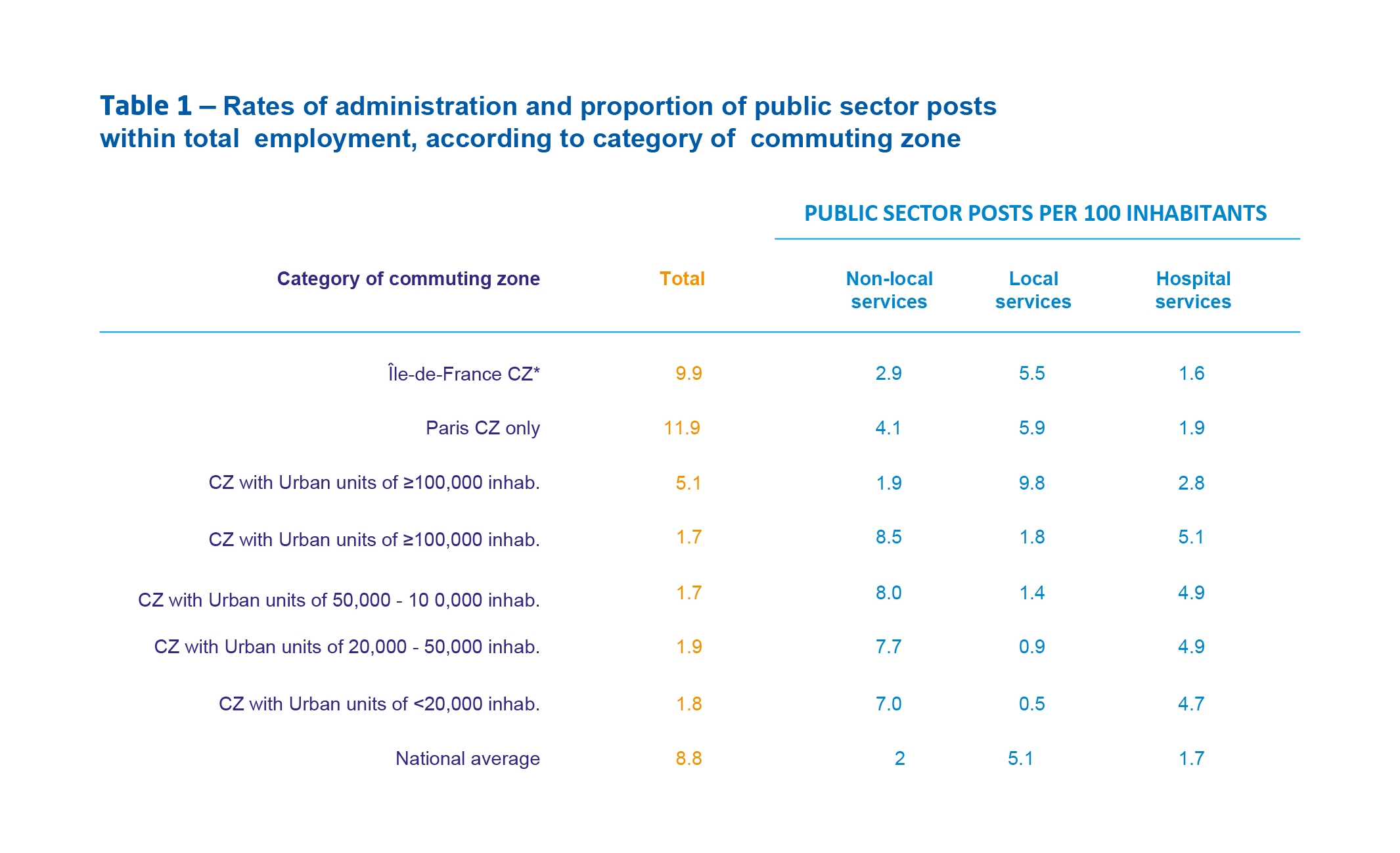
The number of public sector posts per 100 inhabitants for non-local posts is higher in employment areas with large cities than in rural areas. Yet, the distribution of local posts —including government, local authorities, and hospital posts — appears more homogeneous even when compared with the number of inhabitants, without significant disadvantages for less dense areas. Demographically dynamic areas are even relatively less well endowed with educational or hospital jobs; these sectors only adjust to demographic changes with a certain inertia. But the number of agents hired by local authorities increases with the fiscal potential and population density.
Altogether, the number of civil servants is generally higher in the most populated areas: they vary from seven per hundred persons in rural areas to nearly ten in major cities as defined by agglomerations having a population above 500,000. But the share of public employment in overall employment varies only slightly according to the density of the populations: the distribution of public employment corresponds closely to that of private employment. However, these averages by category of employment area in fact conceal a large heterogeneity: the number of civil servants can vary by a factor of two within the same category (e.g. within rural areas), without these variations seeming to correlate with the economic and social needs of a given area.
On the basis of these observations, this report offers a few points for consideration about possible improvements in the distribution of public sector posts throughout France.
This report provides new data about civil service jobs and their geographical distribution. The originality of this research lies in the distinction it makes between local services and non-local services, as analysed in 300 different geographical zones for employment across the country. A “local” service is a service aimed at providing services for local users; a “non-local” service is supplied for the residents of a département, a region, or even the country as a whole.
To measure the average level of services—such as education, hospitalization, law enforcement—offered in a territory by public employment, an indicator for the degree of administration is used, an indicator that correlates the number of public employees to the number of inhabitants (or users, whenever possible). This method, an approximation of the volume of service provided, has already been adopted by some administrations, such as the Ministry of Education, for instance, which publishes each year the number of teachers per student in each department for primary and secondary education, or the General Directorate of Administration and the Civil Service (DGAFP), which publishes annually the number of public officials per 100 inhabitants by department for the three civil services --State, territorial, hospitals.
While this method makes it possible to compare the allocation of resources between regions compared with their populations, it does not take into account differences in population density, and therefore, offers no indication about the accessibility of services, a consideration that would necessitate measuring distance or time of access.
This report uses an complementary indicator — variations in the proportion of public sector posts for total employment – for non-local services, those for which location is not at least theoretically linked to the presence of users. This indicator makes it possible to analyse the distribution of public sector posts compared with other posts.
This report begins by breaking down public employment between local and non-local services; then it analyses this distribution by region and employment area. From these observations, the study concludes by proposing different options for changing the distribution of public sector posts throughout the country.







